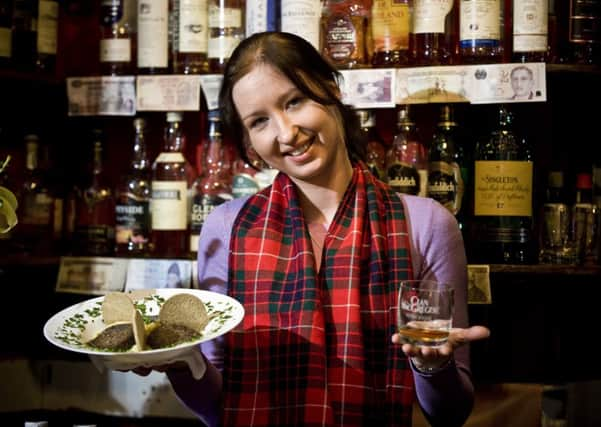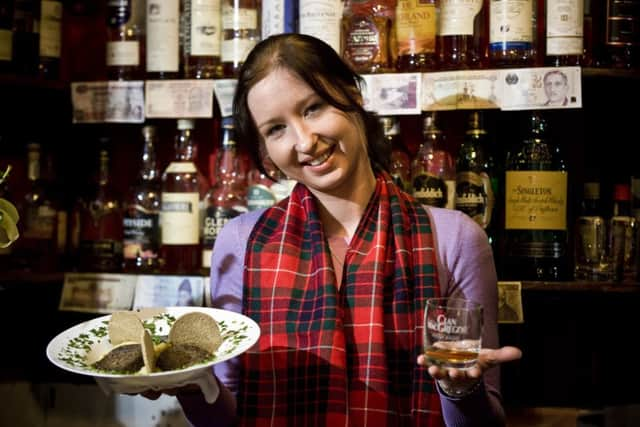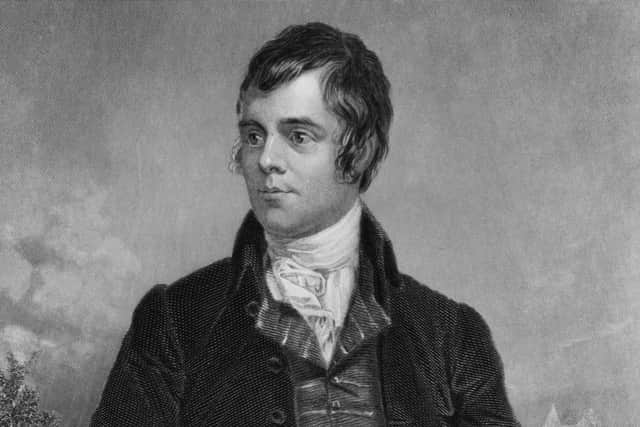Burns Night: A guide to holding a Burns Supper


The first Burns club, founded by Ayrshire merchants, held a supper in 1802, on what they thought was Burns’ birthday – 29 January. By the following year they had established the actual date of his birth from parish records, and Burns suppers have been held on 25 January ever since. If you want to hold your own, we’ve put together a step-by-step guide.
Strictly speaking, kilts are not de rigueur at a Burns Supper, as the bard himself, as a Lowlander, would not have worn one. Furthermore, it would have been illegal for him to do so for much of his life even if he had wanted to – kilts were outlawed in the Dress Act of 1746 after the Jacobite rebellion, which was not repealed until 1782. Moreover, kilts were not thought of as common Scottish dress until the 19th century. But Burns was vocal in his support of the rights of Highlanders to don their traditional dress and would no doubt have supported your right to get in the mood by doing so too.
Advertisement
Hide AdHaggis, whisky and poetry are the essentials, but for the full Burns Supper experience there are plenty of rituals to be observed. The evening begins with the guests being piped in (although a CD will suffice for those without a piper among their acquaintance) and the supper itself kicks off with The Selkirk Grace – the prayer of thanks attributed to Burns, although it was well known before he recited it at a dinner given by the Earl of Selkirk in 1794:


Some hae meat and canna eat,
And some wad eat that want it;
But we hae meat, and we can eat
Sae let the Lord be thankit.


The supper starts with soup – usually Scotch Broth or Cock-a-Leekie – and then it’s time for the main event: the haggis. Presented with no shortage of ceremony, the haggis is traditionally piped in, on a silver salver carried by the cook, to a standing slow clap.
As it’s laid down, the host recites the Address to a haggis:
Fair fa’ your honest, sonsie face,
Great chieftain o the puddin’-race!
Aboon them a’ ye tak your place,
Painch, tripe, or thairm:
Weel are ye worthy o’ a grace
As lang’s my arm.
The groaning trencher there ye fill,
Your hurdies like a distant hill,
Your pin wad help to mend a mill
In time o need,
While thro your pores the dews distil
Like amber bead.
His knife see rustic Labour dight,
An cut you up wi ready slight,
Trenching your gushing entrails bright,
Like onie ditch;
And then, O what a glorious sight,
Warm-reekin, rich!
Then, horn for horn, they stretch an strive:
Deil tak the hindmost, on they drive,
Till a’ their weel-swall’d kytes belyve
Are bent like drums;
The auld Guidman, maist like to rive,
‘Bethankit’ hums.
Is there that owre his French ragout,
Or olio that wad staw a sow,
Or fricassee wad mak her spew
Wi perfect scunner,
Looks down wi sneering, scornfu view
On sic a dinner?
Poor devil! see him owre his trash,
As feckless as a wither’d rash,
His spindle shank a guid whip-lash,
His nieve a nit;
Thro bloody flood or field to dash,
O how unfit!
But mark the Rustic, haggis-fed,
The trembling earth resounds his tread,
Clap in his walie nieve a blade,
He’ll make it whissle;
An legs an arms, an heads will sned,
Like taps o thrissle.
Ye Pow’rs, wha mak mankind your care,
And dish them out their bill o fare,
Auld Scotland wants nae skinking ware
That jaups in luggies:
But, if ye wish her gratefu prayer,
Gie her a Haggis
At the first line of the third verse, the speaker draws and sharpens (or mimes sharpening) a knife, and at the next line – “An’ cut you up wi’ ready slicht” – plunges it into the haggis and cuts it open from end to end. At the close of the recital the company toasts the haggis and then settles down to eat it. The haggis is served with neeps and tatties (turnips and potatoes – both mashed), and while it may not please the purists, whisky cream sauce is often a welcome addition, as is the option of vegetarian haggis. Red wine goes well with haggis, as does Irn Bru (albeit for reasons of patriotism rather than flavour) for the non-drinkers.
A Scottish dessert is in order, with cranachan, clootie dumpling and tipsy laird (whisky trifle with Scottish raspberries) going down well, followed by oatcakes and cheese – and if you really want to honour the bard, go for Ayrshire cheeses like a Dunsyre Blue or Dunlop, as an homage not just to his home county, but to his cheese-maker mother – then coffee with shortbread or tablet.
After the meal the Immortal Memory toast is given, in which one of the guests gives a speech commemorating Burns’ life and poetry and whisky glasses are raised, again. Next up is the Toast to the Lassies, once an opportunity for one of the male guests to thank the women who prepared the food, now more often a chance for them to muse on the role women play in life generally. As a man almost as legendary for his love life as his poetry, Burns thoughtfully provided plenty of inspiration for such a speech, although if you’re among friends, the personal touch always makes this part of the evening particularly entertaining – depending how much whisky has been consumed by this point. Ditto the Toast to the Laddies, the riposte from the women in which a female guest answers the points raised and makes a few of her own.
Advertisement
Hide AdAfter the speeches it’s common for guests to perform works by Burns, whether songs or poems, with Ae fond kiss, A man’s a man, To a mouse, To a louse, The deil’s awa wi’ the exciseman and Tam o’ Shanter always well-received. Bonus points for delivery in an authentic Scots accent, since this can be tricky for actual Scots. At the close of the evening guests stand, join hands and sing Auld lang syne – why not memorise the below and astound assembled company by actually knowing more than the first verse?
Should auld acquaintance be forgot,
And never brought to mind?
Should auld acquaintance be forgot,
And auld lang syne?
For auld lang syne, my dear,
For auld lang syne,
We’ll tak a cup of kindness yet,
For auld lang syne.
And surely ye’ll be your pint-stowp,
And surely I’ll be mine,
And we’ll tak a cup o kindness yet,
For auld lang syne.
We twa hae run about the braes,
And pou’d the gowans fine,
But we’ve wander’d monie a weary fit,
Sin auld lang syne.
We twa hae paidl’d in the burn
Frae morning sun till dine,
But seas between us braid hae roar’d
Sin auld lang syne.
And there’s a hand my trusty fiere,
And gie’s a hand o thine,
And we’ll tak a right guid-willie waught,
For auld lang syne.
Happy Burns Night when it comes and wherever you’re celebrating, from Scotsman.com.